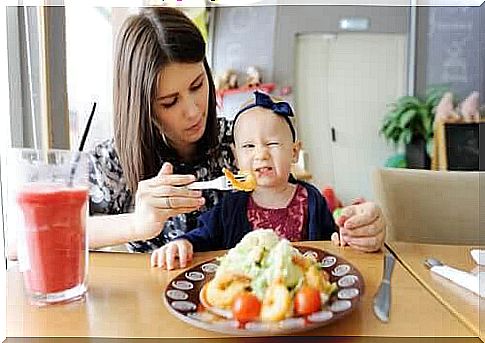How Children Develop Their Food Preferences

As I said, genes have a lot to do with what we like to eat and what we do not like. But that’s not the whole story. Our food preferences can change and eating habits can be acquired over time. Continue reading to learn more about how children develop their food preferences.
How are food preferences developed?
It all starts already in the womb. During the first 7 to 8 weeks of pregnancy, the fetus develops its taste buds. Through the umbilical cord and amniotic fluid, the fetus receives all its nutrients from the expectant mother.
Later, during breastfeeding, the baby begins to taste what the mother eats. Because of this, when he or she tastes something new, the child prefers the flavors that are recognized from the past. Repeated exposures to a taste also affect this, as do social environments and how the baby feels and feels when he or she eats. Even your culture can determine your taste when it comes to food.

Nursing habits affect a child’s food preferences
Breast milk comes with many more benefits than breast milk substitutes, but sometimes children are not interested or the mother may not be able to produce enough milk. However, studies show that breast milk makes it easier for children to try new foods.
Perception of salt
The ability to perceive salty flavors begins to develop naturally at 4 months of age. At 2 years of age, children usually like salty foods. Mothers who eat a lot of salty foods during pregnancy have a greater risk of giving birth to underweight children. But you can train yourself and your child to eat a less salty diet.

Sweet things have never made anyone angry
Children usually love sweets. Sweet flavors have always been linked to well-being and pleasant emotions due to the zones that it activates in our brains. Just a little sugar can increase a baby’s heart rate. We know this because of how sweet breast milk is.
Sweetness is also associated with festivities and celebrations, it gives us a sense of joy. Maybe that’s why we eat chocolate when we feel down. However, some genes may make this different for some people. Therefore, some people can only eat very little sugar at one and the same time.

Things can quickly get sour
Acidity is something that is characteristic of some unripe, poisonous fruits. During our evolution, some individuals became ill and some may even die after eating them. This is why children are programmed to hate certain bitter-tasting foods, such as broccoli and Brussels sprouts.
All have receptors on the tongues that are sensitive to sweetness and acidity. For example, if your child is sensitive to sweet tastes, he will not eat as much candy. Although after 10 or more attempts he may get used to the taste.









